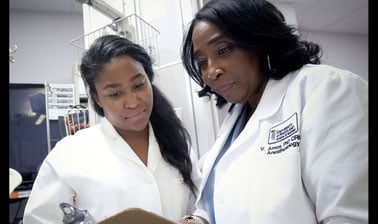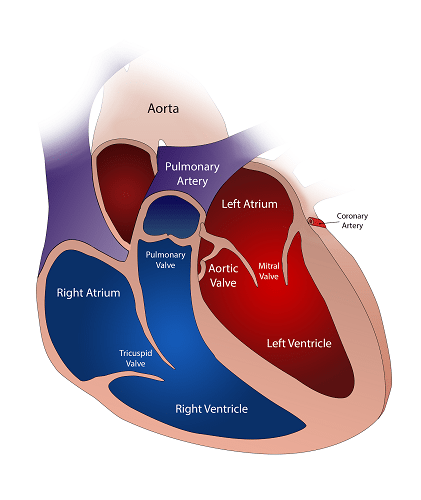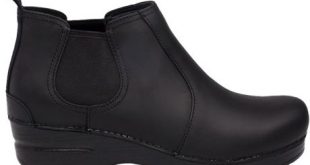Introduction
Completing an Anatomy program is required to become a registered nurse. You’ll really have to learn anatomy language and get a deeper understanding of complicated physiological functions to do just that. The study of Anatomy explains that how the body of a human is made. This training is required for anybody planning to work in the medical industry. The course equips students with the fundamental knowledge needed to assist patients. Chemical composition and how it relates to life are also covered in the curriculum. The methods provide forth the fundamental pedagogic and conceptual concepts needed to succeed in the medical field.
What is Anatomy?
The study of recognizing and characterizing the anatomy of human organisms is known as anatomy. It is both a matter of biology and a clinical field of study. The anatomy of human body is the study of the components of the human body. The knowledge of Anatomy is required for patient treatment and other wellbeing activities.
What are some of the fundamentals of anatomy?

Beginner’s Anatomical structure Clinical features are the study of the body’s systems and structures, as well as how they work. Physiology is also an important subject that is related to anatomy and it is preoccupied with the internal dynamics of cells, tissues, and glands, whereas anatomy is preoccupied with the physical structure of biological components.
Is it necessary to know anatomy in order to work as a nurse?
Nurses need to know anatomy in order to know where and when to look for their patients. Nurses must be able to make quick judgments when a patient wants to have rapid treatment. Healthcare professionals can utilize the skills they learn in this workshop to analyze, follow, and verify the progress of their patients.
What exactly is the distinction between anatomy and physiology?
Physiology and anatomy are two of the most important terms and disciplines of knowledge in systems biology. Anatomical features of the body’s internal and external organs, as well as their structural relationships, whereas physiology is the study of how those parts work.
Why is it so difficult to learn human anatomy?

This program is complicated and, and yet again, demands a lot of remembrances. The research of the human body’s structure and the components that join together to form, including as bones, arteries, glands, and peripheral nerves, and also how they interact and work, is known as the anatomy of humans.
Is learning anatomy purely and simply rote memorization?
The study of anatomy requires a high level of memorization, and perhaps even a level of understanding.
Do really nurses need to learn anatomy?
Yes, it is necessary. You wouldn’t need a triple PhD in anatomy to be a nurse, but you will need to understand the fundamentals. As a nurse, there are five reasons why you’ll have to know anatomical structure.
Nurses benefit from an understanding of anatomy while doing nursing assessments.

Nurses need a strong knowledge of anatomy to do a head-to-toe evaluation (or other nursing evaluations) and comprehend what you’re measuring. When listening to the heartbeat, for example, you’ll need to understand which veins you’re looking at. Which region did you hear the crackling sound in when you listened to the respiratory system?
Nurses benefit from an understanding of anatomy when doing nursing tasks.
When you’re going to take blood or start an Intravenous, you’ll need to know where the greatest veins are for that particular nursing ability. Similarly, when inserting a Urinary catheter in a female patient, make sure the catheter is inserted into the urinary tract rather than the uterine tubes.
Nurses benefit from an understanding of anatomy to fully understand how infections affect the human body.
When your patient has renal failure, for example, you can recall the anatomy of the kidneys. You can see that the epithelial tissue isn’t operating correctly. When you add in a little physiology, it’s easy to see why your patient is experiencing metabolic acidosis. Take bacterial infection, which affects a large number of individuals each year. In this situation, you may utilize your anatomy understanding to figure out how the pulmonary sacs’ respiration is impeded, resulting in low blood oxygen and hydrochloric abnormalities in those individuals.
Anatomy knowledge aids nurses in understanding patient care.

Assume a patient is being treated with injectable antibiotics. You’ll need to know which anatomical structures (or systems) these medications will impact as a nurse. Medications will have an effect on the kidneys in this case. To learn how the kidneys operate and how hydrochlorothiazide will affect the kidneys, go back to physiology. We can give better quality care and be aware of certain indications and complaints if we comprehend how therapies influence different parts of the body.
Nurses benefit from an understanding of anatomy when it comes to paperwork.
It is standard practice for a nurse to utilize the correct anatomical words while completing paperwork. You would still not write, “Patient suffers pulmonary hypertension on their butt,” for instance –, if the patient experienced pulmonary hypertension on their behind.
Final Verdict
So, you see that learning about anatomy or physiology is important. Without this nurses will not be able to take care of their patients and find out their problems without the help of doctor. Once you pass the exam and begin working as a nurse, you will be completing evaluations on a daily basis. Basic anatomy, such as the back of your hand, will become familiar to you. Even when you’re not on the clock, you’ll discuss different aspects of anatomy.
So, if you’re a nursing student who’s having trouble with anatomy, keep in mind that you don’t need to be an expert, but you’ll have to understand the fundamentals.
 Nursing Trends
Nursing Trends







